| 1 | Highveld garter snake |
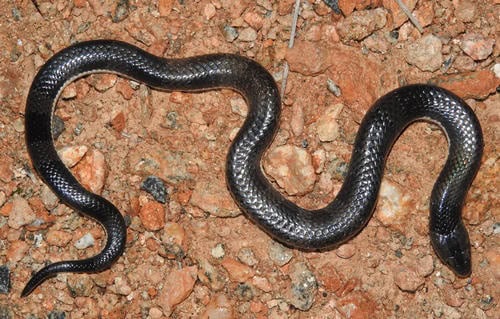
A snake you probably won’t meet unless you’re stumbling around wetter areas of South Africa at midnight. The highveld garter snake has no relation to the harmless garter snakes of the US and instead belongs to the 10 member Elapsoidea clan, all of which are venomous. As youths, they have vividly contrasting cream and black bands, while as adults, the dark gradually pushes the light back until black totally dominates.
Highveld garter snakes are often found on roads post heavy rain, and measure 50-70cm. Their venom is easily survivable, but has both cytotoxic and neurotoxic effects. This report detailed a 37 year old white male struck by a single fang of a highveld garter snake which he was handling. Dizziness was a prominent symptom, alongside a stiff face, mild euphoria, and a craving for sweet foods (he resorted to chocolate).
Local swelling of arms or hands is also a common symptom with Elapsoidea sundevallii. There’s also a 1980 report featuring this not-so-encouraging quote: “victim felt well enough to crawl”. Visual problems such as double vision can occur from this hidden African venomous snake.
| 2 | Road guarder |

A fast-moving snake of Central America, which reaches Panama to the south and eastern Mexico to the north. This is a very common species, identifiable by its parallel lengthways stripes and thin body. While road guarders won’t lunge dementedly in an obsessive quest to bite you, their venom potency was underestimated for many years due to their rear-fanged nature.
The signature of the road guarder is an immediate burning pain. This is followed by spontaneous bleeding which just won’t stop, as though the venom is flowing through your bloodstream for days while your body struggles to deactivate it. One guy suffered a bite on his right index finger and left middle finger. The swelling spread and spread until his entire arm was a swollen balloon. It took 11 days for the edema to fully subside, and he also suffered from haemorrhaging.
Another guy suffered a numb and stiff finger for 2 days, another tingling at the top of his head, while other victims have suffered no symptoms at all. The road guarder is highly unpredictable, but those who are chewed for longer tend to fare worse. Don’t let it happen to you.
| 3 | Dumeril’s diadem boa |
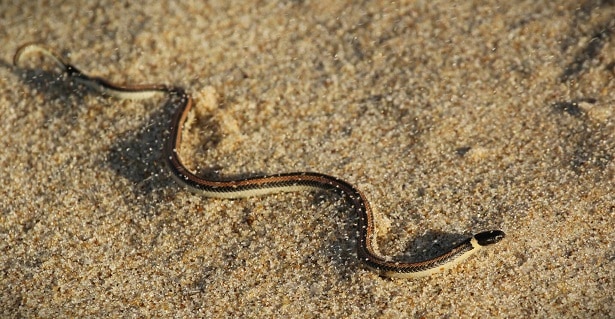
One of the least famous dangerous snakes of South America. Dumeril’s diadem boa (Phalotris lemniscatus) is mainly found in Uruguay, in open rocky areas, sometimes suburbs. It bites relatively few people, yet appears to be the carrier of a deadly toxin elixir.
One case involved a 13 year old boy who was playing with the snake, and was bitten for a prolonged period of time. Within 30 minutes, ecchymosis kicked in – an area of discoloration caused by bleeding beneath the skin, with two fang marks 5mm apart. The boy developed mild edema, with little pain. However, 8 hours later, spontaneous bleeding suddenly burst forth from his gums. This led him to wisely visit the hospital, where he was administered antivenom, and recovered within 24 hours.
Another victim was a 61 year old woman who was bitten on the right hand, while attempting to remove a Dumeril’s diadem boa from her garden. The bite was firm and unyielding, as she struggled to detach it. This woman also experienced bleeding gums, just like the boy.
In the worst case, a man was left with mild brain damage. Luckily, there’s a few factors against this snake ending your life: a mild disposition, small size (maximum 68cm) and a propensity to stay underground. The boy was also foolish enough to poke his finger into its mouth.
| 4 | Moila |
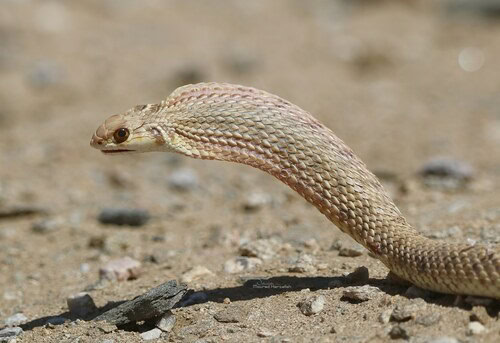
A wide-ranging snake of North Africa and the Middle East. This bulging frog-eyed snake ranges from Mauritania in the extreme west to Oman in the extreme east, occupying Egypt, Saudi Arabia, etc inbetween.
Moilas live in dry rocky areas, often semi-deserts with rocks and sand. A moila (Malpolon moilensis) chewing on your arm isn’t a huge threat, if you rip them off immediately. They’re a rear-fanged snake which must chew their prey to force venom into its bloodstream. But if you delay, watching the snake in mild amusement while your friend snaps a photo, the later consequences include severe pain and swelling, as shown by recent cases involving snake handlers.
In the worst cases, swelling can take one week to fully subside. It’s possible that the moila is capable of killing small children. Moilas are very rare in capacity overseas, and no detailed analysis of its venom exists, so the exact chemical profile remains a mystery. This species is also called the false cobra, due to its ability to spread a hood, though the groups are separated by tens of millions of years on the evolutionary tree.
| 5 | Papuan black snake |
A huge proportion of Papua New Guinea is covered with jungle, and virtually every square metre of that jungle could possess a Papuan black snake (Pseudechis papuanus), ready to hiss and lunge at you. This snake can reach 2 metres and has a venom with most lethal facets. It’s neurotoxic and haemorrhagic, with especially strong anticoagulant properties.
Papuan black snake venom cripples the activity of factor X, which cleaves prothrombin into the active clotting material thrombin. There’s also mild procoagulants, accelerating the formation of clotting factors to deplete their supplies.
This species appears in Australia, but not the mainland, rather the offshore islands of Boigu and Saibai. Adults are shiny and black, with no patterns, and white skin slightly visible between their scales. The most detailed study on Pseudechis papuanus so far involved 9 confirmed victims, among 335 snakebite victims in Papua New Guinea. Two patients suffered systemic spontaneous bleeding and five patients showed neurotoxic symptoms, with one requiring mechanical ventilation. Despite fear among locals (and our own attempts to terrify you), Papuan black snakes aren’t especially common, and are believed to have declined since the 1970s.
| 6 | Neuwied’s false boa |
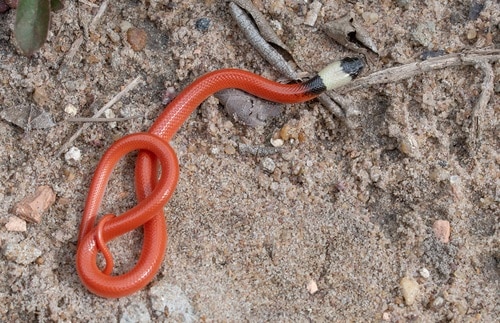
A fairly common snake which appears in grassy clearings and around human dwellings. This 80cm snake ranges from Costa Rica and Panama to Trinidad and French Guiana.
Bites in humans are very rare, as Pseudoboa neuwiedii only bites if aggravated and pushed. There are no detailed case studies, so there’s no foretelling what fate might befall you. But there’s a smattering of scientific information around, which hints at deadly powers for such a non-famous snake. According to a 2017 study, its venom has neurotoxic effects, causing a significant blockage of the muscle receptors for acetylcholine (brain signal transmitter). There was also strong myotoxic properties – the ability to degrade muscle fibres. The venom specialised in proteolytic action, the physical destruction of the human body’s proteins by degrading the amino acid bonds within them. It may cause spontaneous bleeding, as the venom was capable of disabling fibrinogen in the alpha chain.
The question is how strong these properties are in humans, but a 2018 study found equal proteolytic qualities to the lethal Neuwied’s pitviper. The lucky thing is that this snake is bright and colourful enough (nature’s warning signs) that most locals won’t touch them anyway. This snake leans towards lizards for its prey, and can be a crazed eater, entering a feeding frenzy where nothing is off limits, even its own shed skin.
| 7 | Uracoan rattlesnake |
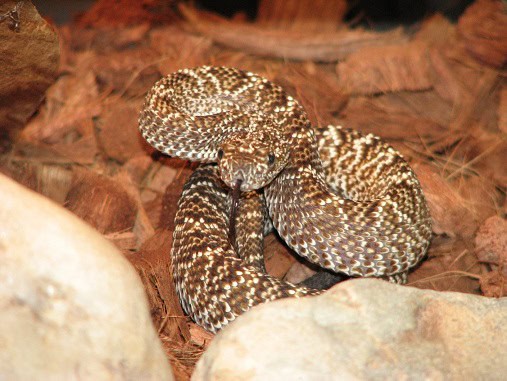
Americans probably won’t encounter this little known rattlesnake, as it solely inhabits Venezuela. This is a small species at a wild maximum of just 68.4cm, versus over 2.5 metres for the Floridian east diamondback. Reports suggest a venom packed with cardiotoxins, showing a flattening of the T and S waves indicating healthy heart function.
Another study found a toxin similarly structured to crotoxin, the notorious neurotoxin found in the South American rattlesnake. Time will tell whether the Uracoan rattlesnake can also halt lung inflation and disable all voluntary muscle movements in humans themselves. Their personality ranges from aggressive, to docile and easy to control. Their diet is typical, watching mice curiously in captivity before wolfing them down, and eating Cnemidophorus racerunner lizards in the wild.
Rather than swarming jungles, the Uracoan rattlesnake lives in the dry savannahs of northeast Venezuela, specifically in the states of Anzoategui and Monagas. They appear in areas ranging from no trees to dry forests. Another confirmed power is haemorrhaging, which didn’t quite match the Martinique lancehead, but produced a sizeable haemorrhagic zone in a study on mice.
| 8 | Habu |
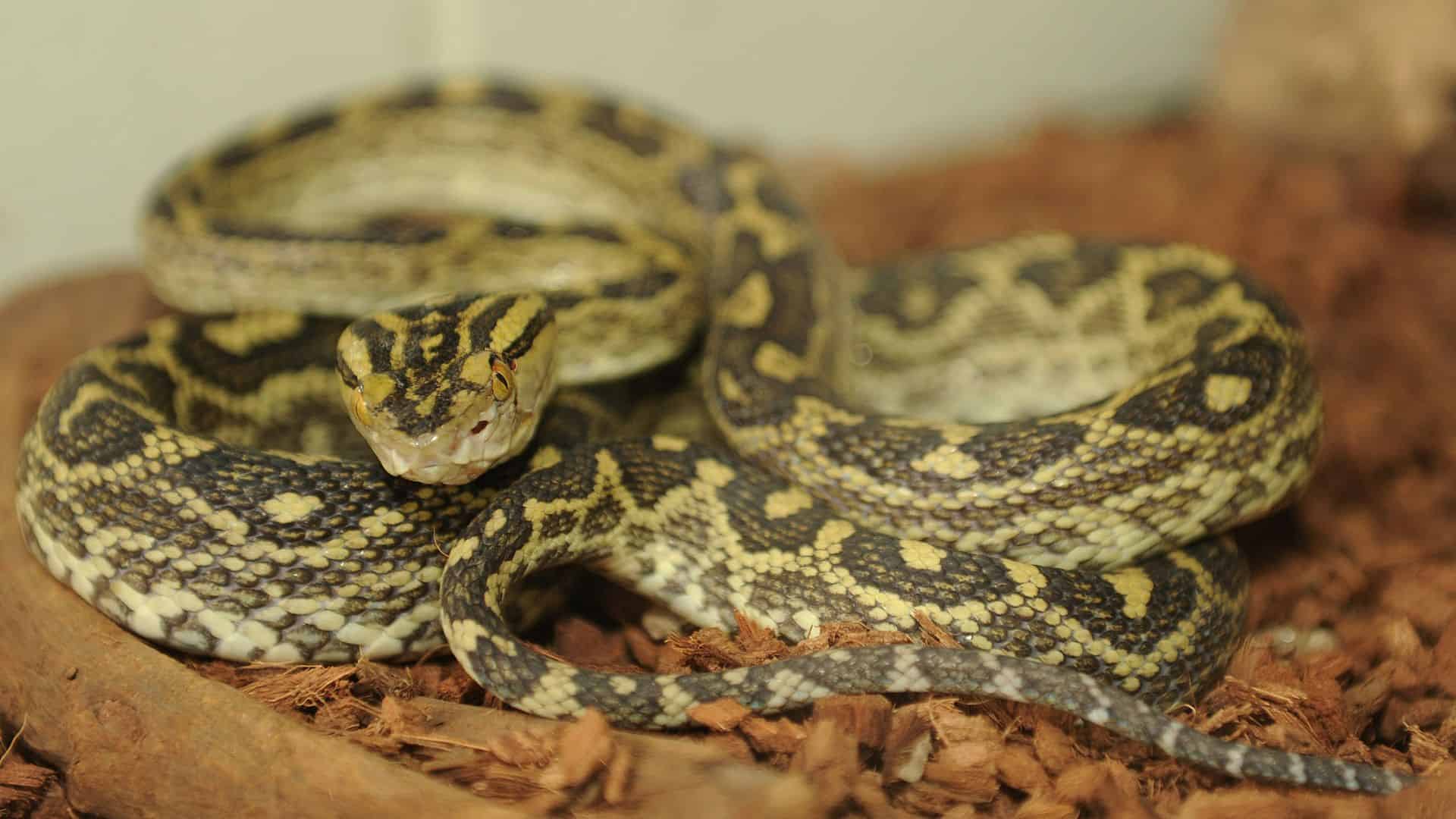
A 120-150cm viper of Japan’s southern Ryukyu islands. Every crop field in Okinawa has its own personal habu waiting for unfortunate souls to stray close, with millions lurking across the peninsular, particularly on the large island of Amami.
This viper belongs to the Protobothrops family, with 15 members across eastern Asia. There’s also the Taiwenese habu and Tokara habu, but the one that receives the habu title alone, the embodiment of all deadliness the genus has to offer, is Protobthrops flavus, which is the largest of the group, at a maximum of 2.4 metres. Habus tend to inhabit open areas of southern Japan, like riverbanks, schoolyards and fields rather than claustrophobic forests. Their venom is similar in style to a Bothrops lancehead, with a fatality rate of less than 1% with antivenom, but potential severe skin destruction with necrosis and haemorrhaging. The tissue destruction can be severe enough that the victim loses control over their hands and feet.
In 1980, there were 400 bites, with several deaths. Habu antivenom was created long ago in 1904, and is stocked in virtually all hospitals, but remember that first, you have to make it to the hospital.
| 9 | Palestine burrowing asp |
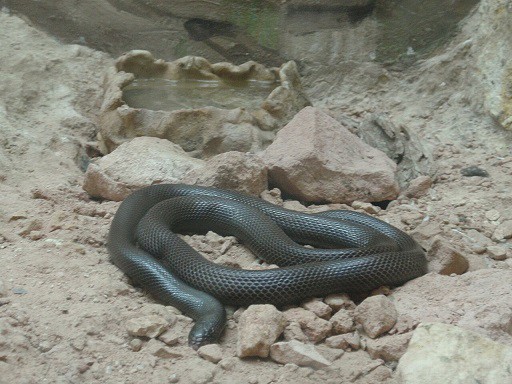
A snake of two halves: it lives mainly underground in arid deserts, meaning that humans rarely cross their path. Yet if its fangs strike flesh, the Palestine burrowing asp is easily capable of killing, and can leave deformity and discoloration even 10 months later.
This species is near fully black and inhabits Egypt and southern Israel. Deaths are very rare, with the last confirmed occurring in 2002. This species has the secret weapon of stabbing sideways with its fangs, which can lull even scientists into a false sense of security, when they think they’ve securely gripped its head.
In a 1999 report, a researcher was bitten on the index finger while milking a Palestine burrowing asp. Numbness and edema appeared within minutes, which were rapidly followed by weakness, sweating, vomiting and fading consciousness. The swelling reached the forearm, while his blood pressure rose, likely due to a toxin class in Atractaspis engaddensis called sarafotoxins. Do not touch any pure black snakes you see in North Africa or the Middle East.
| 10 | Southern twig snake |
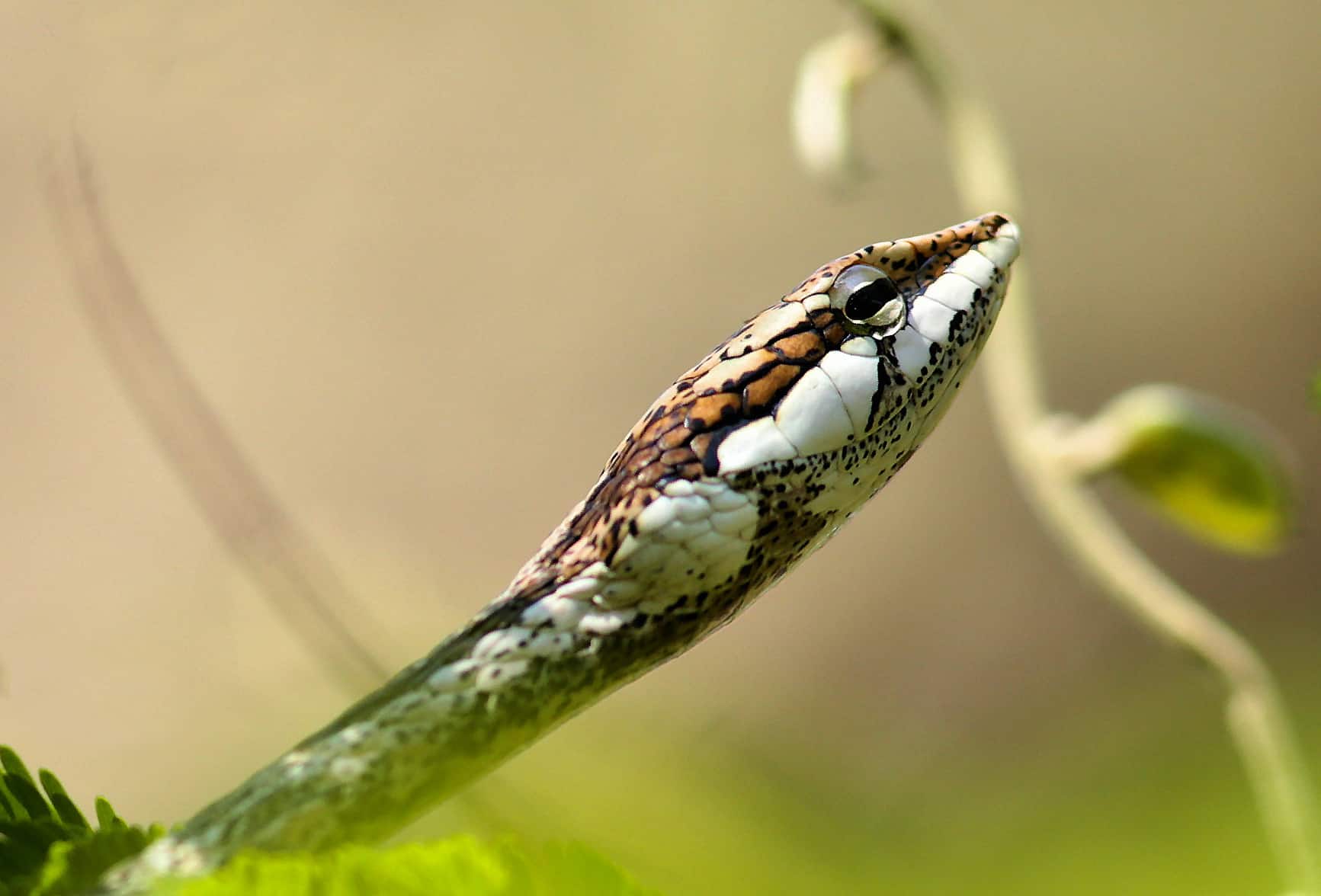
A branch-loving snake which is normally found on low perches like bushes, rather than towering above in the canopies. This is part of the 4 member twig snake clan, all found in Africa, and of those, Thelotornis capensis undoubtedly looks the most like a twig, with the least green covering its body. Its goal is disguise, but it isn’t reliant on this, wielding a hemotoxic venom as well. Southern twig snakes are known to cause nosebleeds, headaches, nausea, and abominable pain.
This species inhabits eastern South Africa, Zimbabwe and Mozambique. On one hand, dry bites are common with southern twig snakes. On the other hand, no antivenom is currently available, and they’re an extraordinarily quick species whose fangs can suddenly be piercing your skin like they just teleported.
According to a 1999 study, they’ve chosen the niche of cold-blooded prey, with 63% of meals being lizards, 8% snakes and 27% amphibians. Mammals are rarely on their menu, yet their venom is still potent against us. Its venom also caused uncontrollable bleeding in a dog (which survived) in a 2003 report. Like most snakes, twig snakes have venom tailored for self-defence as well as hunting.
